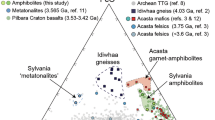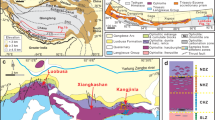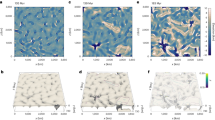Abstract
ISOSTATIC equilibrium ensues only after disturbances have ceased. The strata of mountains must originally have been deposited horizontally. They may be held to have attained to heights much greater than now exist. As they accumulated locally gravity would be disturbed by their weight, and if they rested on a much deeper foundation of slightly viscous but more dense material they would gradually sink down into it until they floated in hydrostatic equilibrium. It is assumed that this sinking is a slower process than the deposition of the strata. As the result, if a level datum surface is imagined as traced in the viscous foundation, at a level below the sunk roots of the deposited strata, hydrostatic equilibrium along it requires that the weight of material in all columns standing on this surface should be uniform. This is the observed isostasy ; thus, beneath a more elevated region its roots of lighter density would penetrate deeper and so compensate the extra column aloft. The depths of these floating roots should even exceed the heights of the elevations, so the height of the original deposited strata would have been much greater than that of the present compensated mountains. In the deep sinking of such horizontal local strata they would be broken up, with result reminiscent of the distorted fragmentary mountain strata that are observed. But an analogy to the breaking up of an Arctic ice-floe would be excessive.
This is a preview of subscription content, access via your institution
Access options
Subscribe to this journal
Receive 51 print issues and online access
$199.00 per year
only $3.90 per issue
Buy this article
- Purchase on SpringerLink
- Instant access to full article PDF
Prices may be subject to local taxes which are calculated during checkout
Similar content being viewed by others
Author information
Authors and Affiliations
Rights and permissions
About this article
Cite this article
LARMOR, J. Distorted Mountain Strata in Relation to Final Isostasy. Nature 141, 603 (1938). https://doi.org/10.1038/141603a0
Issue date:
DOI: https://doi.org/10.1038/141603a0



